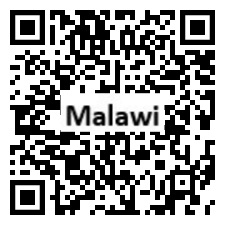Country Summary




Introduction
Background
From the late 15th to the 18th centuries, a prosperous Kingdom of Maravi - from which the name Malawi derives - extended its reach into what are now areas of Zambia and Mozambique. In 1889, a British Central African Protectorate was established, which was renamed Nyasaland in 1907, and which became the independent nation of Malawi in 1964.
Geography
Area
total: 118,484 sq km
land: 94,080 sq km
water: 24,404 sq km
Climate
sub-tropical; rainy season (November to May); dry season (May to November)
Natural resources
limestone, arable land, hydropower, unexploited deposits of uranium, coal, and bauxite
People and Society
Population
20,794,353 (2022 est.)
Ethnic groups
Chewa 34.3%, Lomwe 18.8%, Yao 13.2%, Ngoni 10.4%, Tumbuka 9.2%, Sena 3.8%, Mang'anja 3.2%, Tonga 1.8%, Nyanja 1.8%, Nkhonde 1%, other 2.2%, foreign 0.3% (2018 est.)
Languages
English (official), Chewa (common), Lambya, Lomwe, Ngoni, Nkhonde, Nyakyusa, Nyanja, Sena, Tonga, Tumbuka, Yao
Religions
Protestant 33.5% (includes Church of Central Africa Presbyterian 14.2%, Seventh Day Adventist/Baptist 9.4%, Pentecostal 7.6%, Anglican 2.3%), Roman Catholic 17.2%, other Christian 26.6%, Muslim 13.8%, traditionalist 1.1%, other 5.6%, none 2.1% (2018 est.)
Population growth rate
2.34% (2022 est.)
Government
Government type
presidential republic
Capital
name: Lilongwe
Executive branch
chief of state: President Lazarus CHAKWERA (since 28 June 2020); Vice President Saulos CHILIMA (since 3 February 2020); note - the president is both chief of state and head of government
head of government: President Lazarus CHAKWERA (since 28 June 2020); Vice President Saulos CHILIMA (since 3 February 2020)
Legislative branch
description: unicameral National Assembly (193 seats; members directly elected in single-seat constituencies by simple majority vote to serve 5-year terms)
Economy
Economic overview
low-income East African economy; primarily agrarian; investing in human capital; urban poverty increasing due to COVID-19; high public debt; endemic corruption and poor property rights; poor hydroelectric grid; localized pharmaceutical industry
Real GDP (purchasing power parity)
$28.44 billion (2020 est.)
Real GDP per capita
$1,500 (2020 est.)
Agricultural products
sweet potatoes, cassava, sugar cane, maize, mangoes/guavas, potatoes, tomatoes, pigeon peas, bananas, plantains
Industries
tobacco, tea, sugar, sawmill products, cement, consumer goods
Exports
$1.16 billion (2019 est.)
Exports - partners
Belgium 16%, United States 8%, Egypt 7%, South Africa 6%, Germany 6%, Kenya 5%, United Arab Emirates 5% (2019)
Exports - commodities
tobacco, tea, raw sugar, beans, soybean products, clothing and apparel (2019)
Imports
$3.2 billion (2019 est.)
Imports - partners
South Africa 17%, China 16%, United Arab Emirates 9%, India 9%, United Kingdom 8% (2019)
Imports - commodities
postage stamps, refined petroleum, packaged medicines, fertilizers, office machinery/parts (2019)
Exchange rates
Malawian kwachas (MWK) per US dollar -
Page last updated: Tuesday, July 26, 2022
